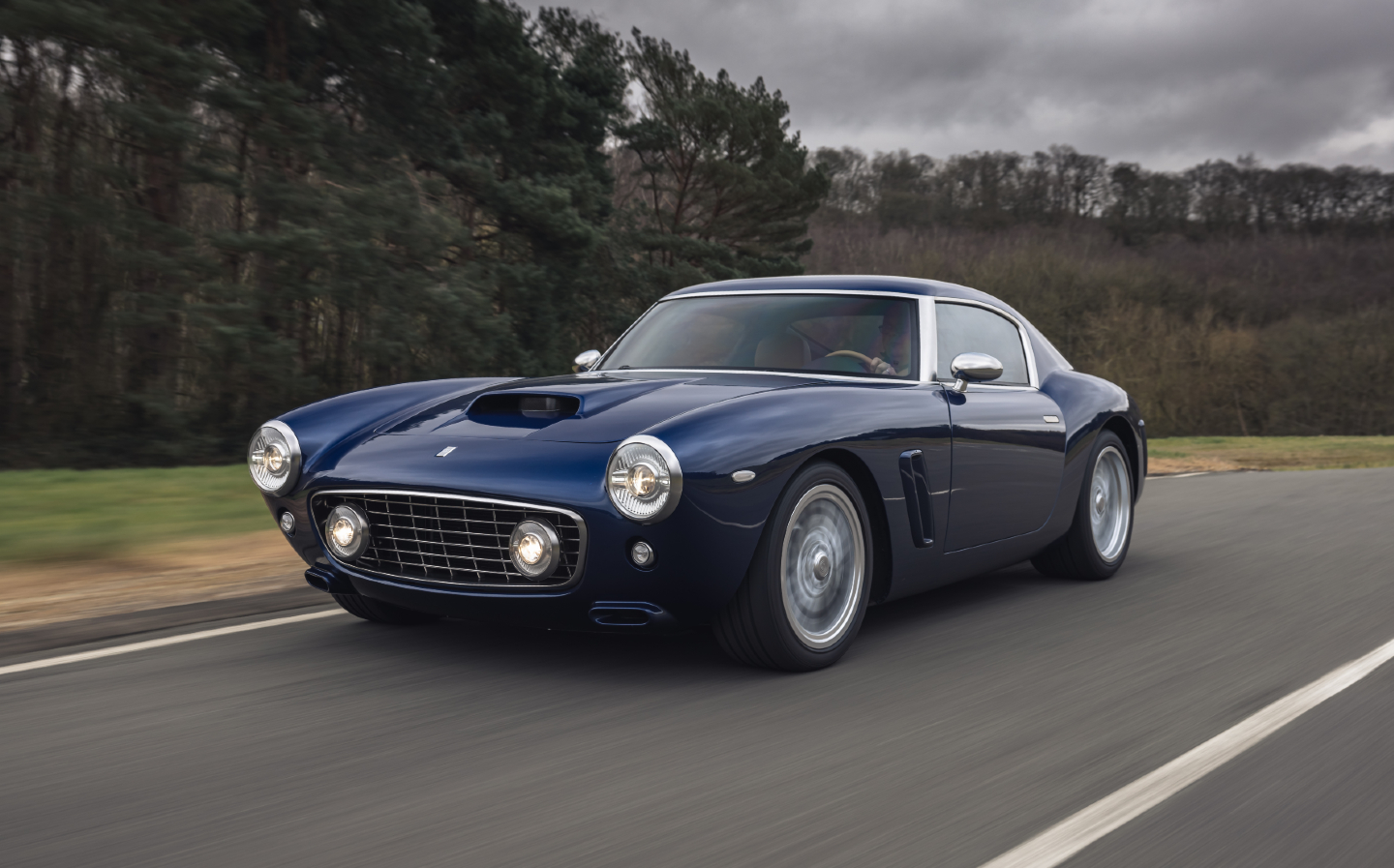RML Short Wheelbase: On the road with the ultra-rare £1.5m Sixties-inspired, V12-powered GT
Modern, classic
If any automotive engineering company has been hiding its light under a bushel it’s RML. The nerdiest car enthusiasts will know its founder’s illustrious motor sports history: Ray Mallock was the son of Major Arthur Mallock, who prepared and raced Austin Seven Specials before creating his own special called the U2, in 1958, which helped open up club racing to the less well-heeled.
Ray and his brother Richard went on to race, too, very successfully, and in 1984 Ray Mallock Limited was founded and set about preparing cars for the World Sports Car Championship.
Perhaps its most notable achievements, however, were in the British Touring Car Championship, with RML responsible for preparing works cars for Vauxhall and Nissan through the 1990s, winning the BTCC teams titles in 1995, 1998 and 1999. RML-prepped cars have also won the F2 national rally championships in Britain, Norway and Germany, the Sebring 12 Hours, the ASCAR series, the LMP2 class at Le Mans and the World Touring Car Championship.
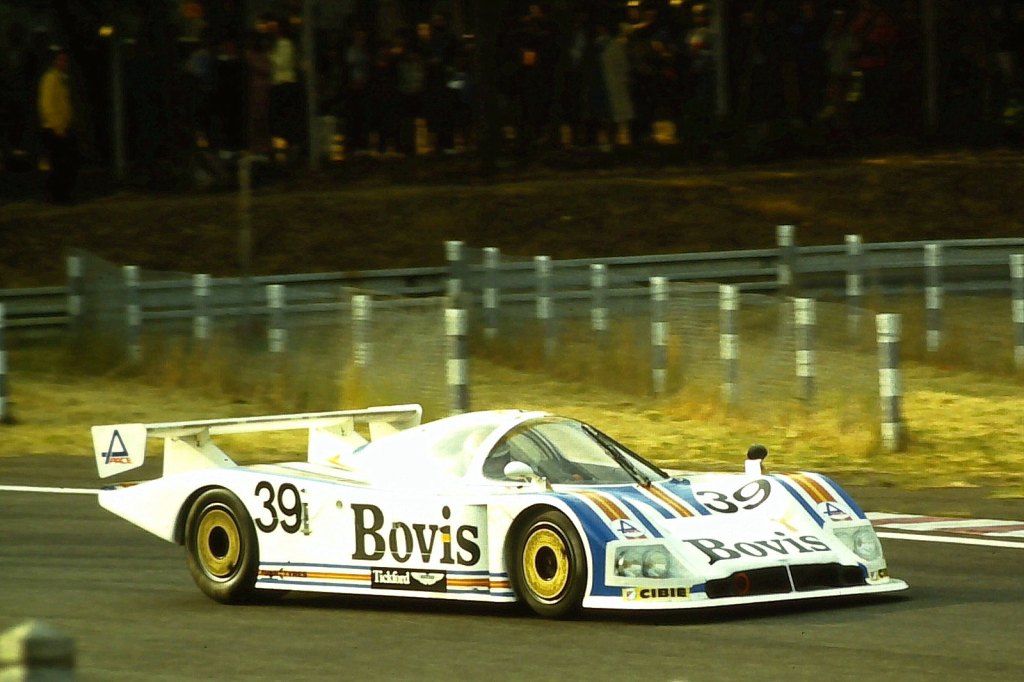
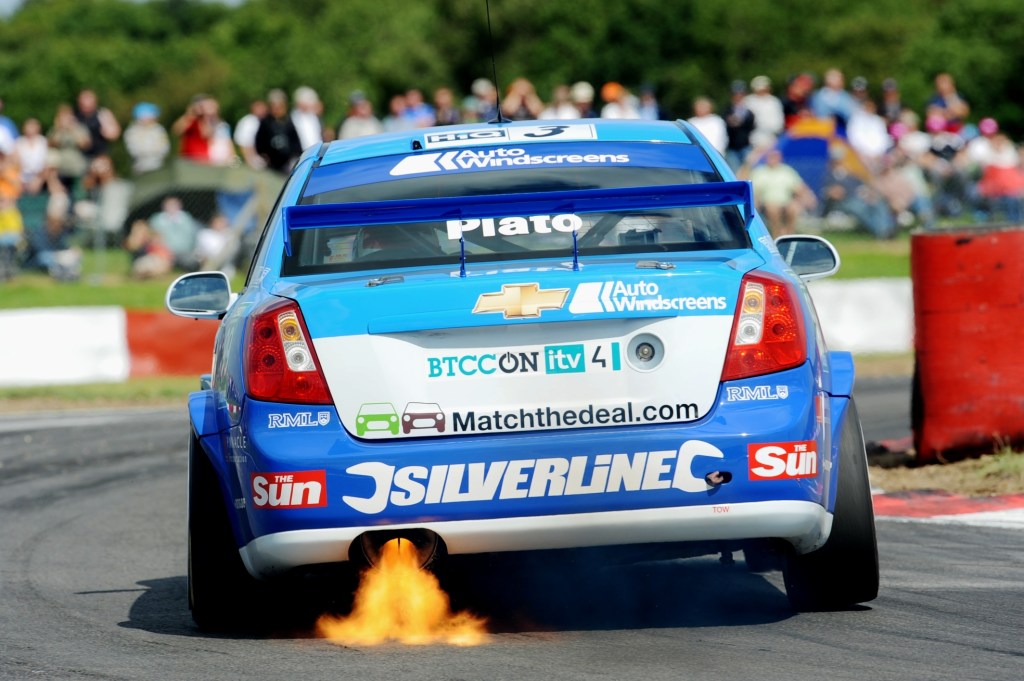
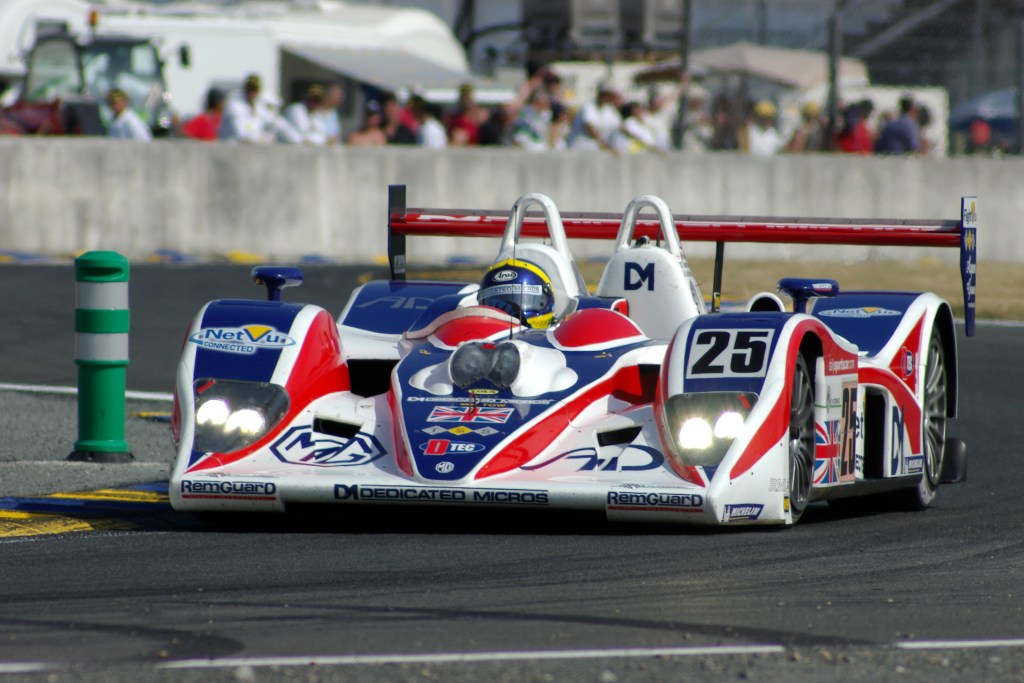


The Northants-based firm also built the Nissan Zeod RC racer – a truly odd, arguably ingenious but ultimately doomed entry into the annals of racing history, designed by British engineering maverick Ben Bowlby.
But these days motor sport represents just 10% of RML’s business: the rest is building and preparing cars for the road, and some of the firm’s clients may surprise you — because often the firm has to keep schtum about its involvement until well after project completion.
A large chunk of its work involves continuation vehicles – new cars built from the blueprints of classic models using methods and materials sympathetic to the originals. RML was contracted to support a number of Aston Martin’s efforts, including the DB4 GT Zagato Continuation and DB5 Continuation, according to current RML CEO Michael Mallock (Ray’s son).

Today, the company assembles Bizzarrini’s continuation cars. A tour of the factory reveals a fleet of the vehicles — based on the class-winning car of the 1965 Le Mans 24 Hours — being prepared for customers. Mallock takes pride in the fact that they’re so close to the original car that they include many of the quirks that owners of the 1960s models would have encountered, including “putting the door handles on upside down”, though he admits some carbon fibre is used in the construction of the modern bodies.
But in addition to that, a number of more forward-thinking projects occupy RML‘s time. It was in charge of the development and construction of the Nio EP9 (below), for example, regarded as the world’s first pure-electric hypercar. Mallock recalls that when the Chinese company approached him about the project it comprised six employees; today Nio is becoming an auto giant, with around 3,000 staff.
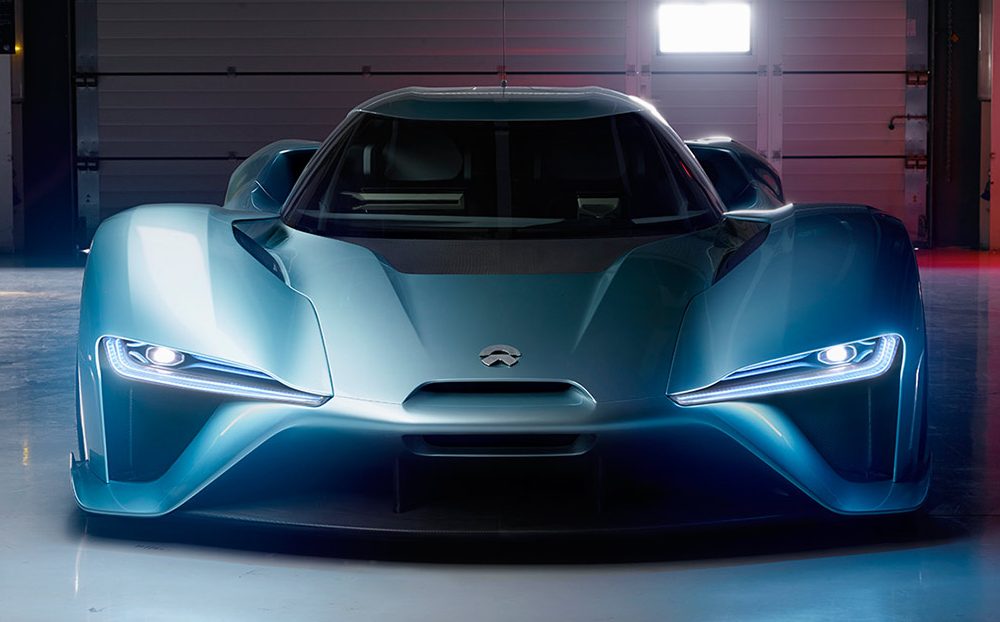
“What’s going to be in there,” Mallock says as we pass a sectioned-off area of the workshop, “is where we’re going to be building the battery packs for the Czinger C21,” which is a fairly extraordinary revelation not only for the fact that RML is helping with the construction of the world’s first 3D-printed hypercar, but also because most car makers buy in battery packs from tech behemoths such as Panasonic and LG.



It turns out RML is not only building the packs but also responsible for their integration within the car.
“That battery pack is probably the highest technology battery pack that is going to be available publicly,” Mallock tells me. “It’s F1 KERS-level technology; 390kW and capable of dumping the entire battery [capacity] in 55 seconds.”
Which is a good thing if you want to deliver a vast amount of power to the wheels in an instant, though presumably there’s no scenario where that would be possible when integrated into the car.
Enter the RML Short Wheelbase
The fact that RML has such a breadth of engineering expertise, and high profile clients, yet most people outside the motor sport engineering industry have never heard of them is something Mallock wants to change. And he’s doing that by creating his own car featuring the RML name for the first time.
“Part of the reason for doing the Short Wheelbase is because over the last 30 odd years most of the work we’ve done has been white labelled,” he explains.
“We haven’t spoken about what we do, for contractual reasons, and in the past it was mainly been motor sport. But over the last 10 years that’s really changed and we’re doing some fantastic, very high technology, very high performance and really beautiful stuff for a lot of customers.
“So we decided to do the Short Wheelbase as a way to show some of our capabilities in a more public way; to help get the name out there.”
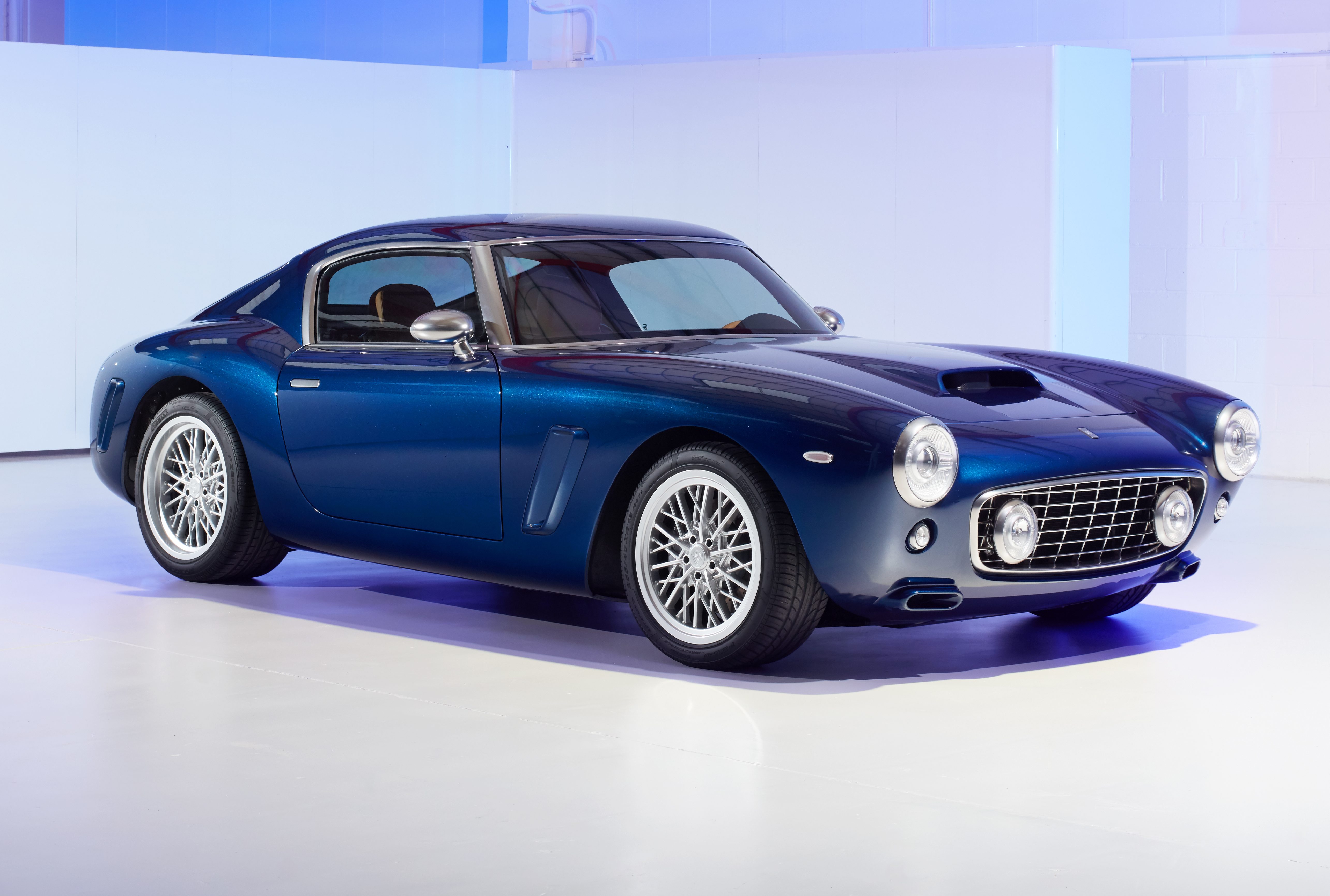
The RML Short Wheelbase is a pretty smart way of doing so. The body instantly evokes the Ferrari 250 Short Wheelbase, one of the most beautiful and beloved vehicle designs of all time. But it most definitely is not based on the Ferrari 250 Short Wheelbase; to suggest such a thing would result in calls from lawyers in Maranello. And RML started with a blank sheet of paper, Mallock claims.
“It’s our interpretation of what the aesthetic from that period would be but it’s not specifically based on anything,” he says. “It’s not imitating anything.”
Sensing the wool isn’t being pulled over my eyes entirely, he volunteers: “The 250 Short Wheelbase for me was one of most iconic cars of that period, so the brief to our design team was: if we were designing a car like that now, what would we do? What technologies could we incorporate? What processes could be used to bring it up to date?”
What followed was two years of “pre-sketching and playing around” with the design, then six months of digital design and virtual reality 3D modelling before Mallock was happy with the look of the car.
And then the model was taken to a studio where it was cut out of clay, and things went a bit pear-shaped.
Lead engineer Nic Rutherford recalls: “There was an awkward moment where Michael turned to me and said, ‘What do you think?’. And I was like, I’m not entirely sure how to tell the boss I really don’t like it.”
Luckily the boss agreed. “In digital 3D — in virtual reality and whatnot — it was mega,” Mallock says. “And then the first clay looked absolutely shit. It was just wrong.”
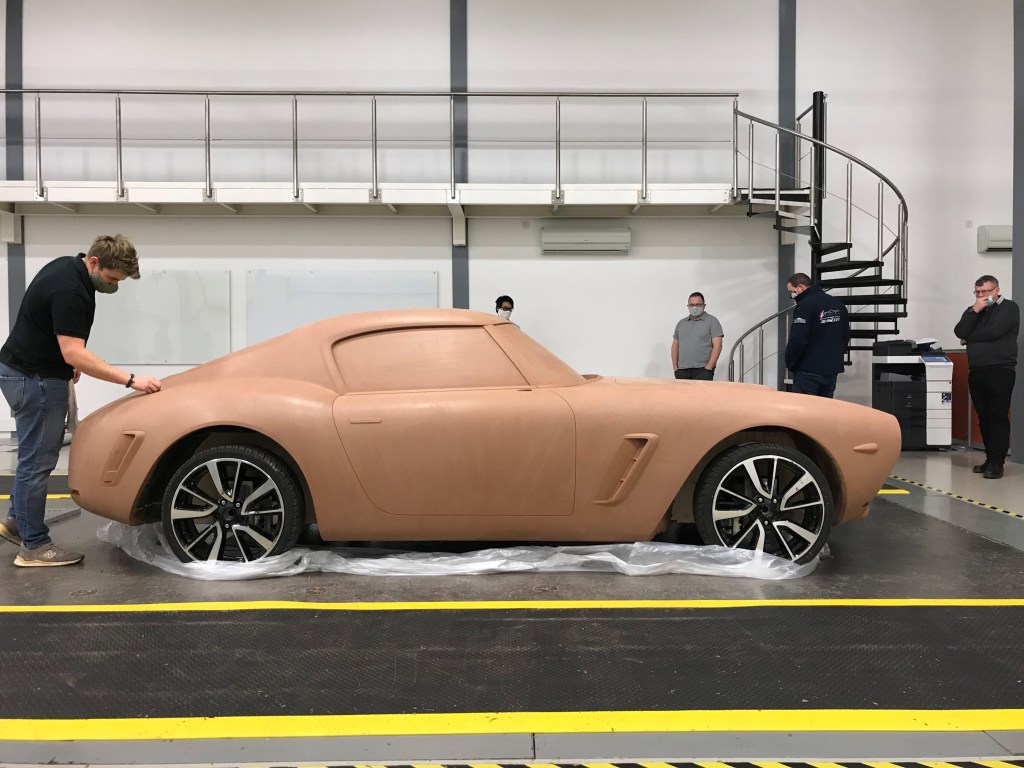
It took another two months before the pair were happy with the clay model and the firm could get onto fabricating the composite double clamshell body.
“We’ve ended up with what we concluded was a nice balance of that classic look but was slightly more up to date,” says Mallock.
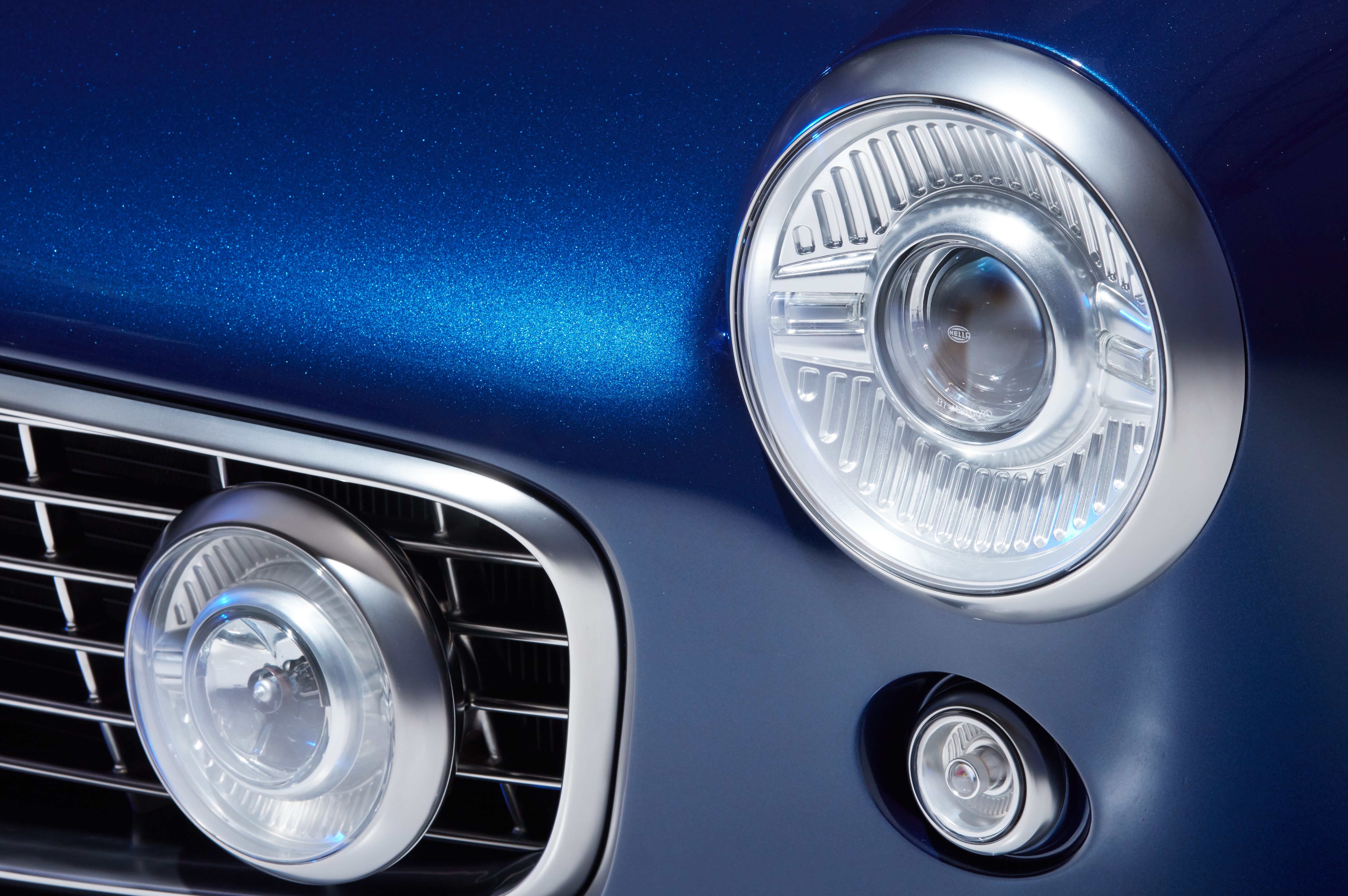
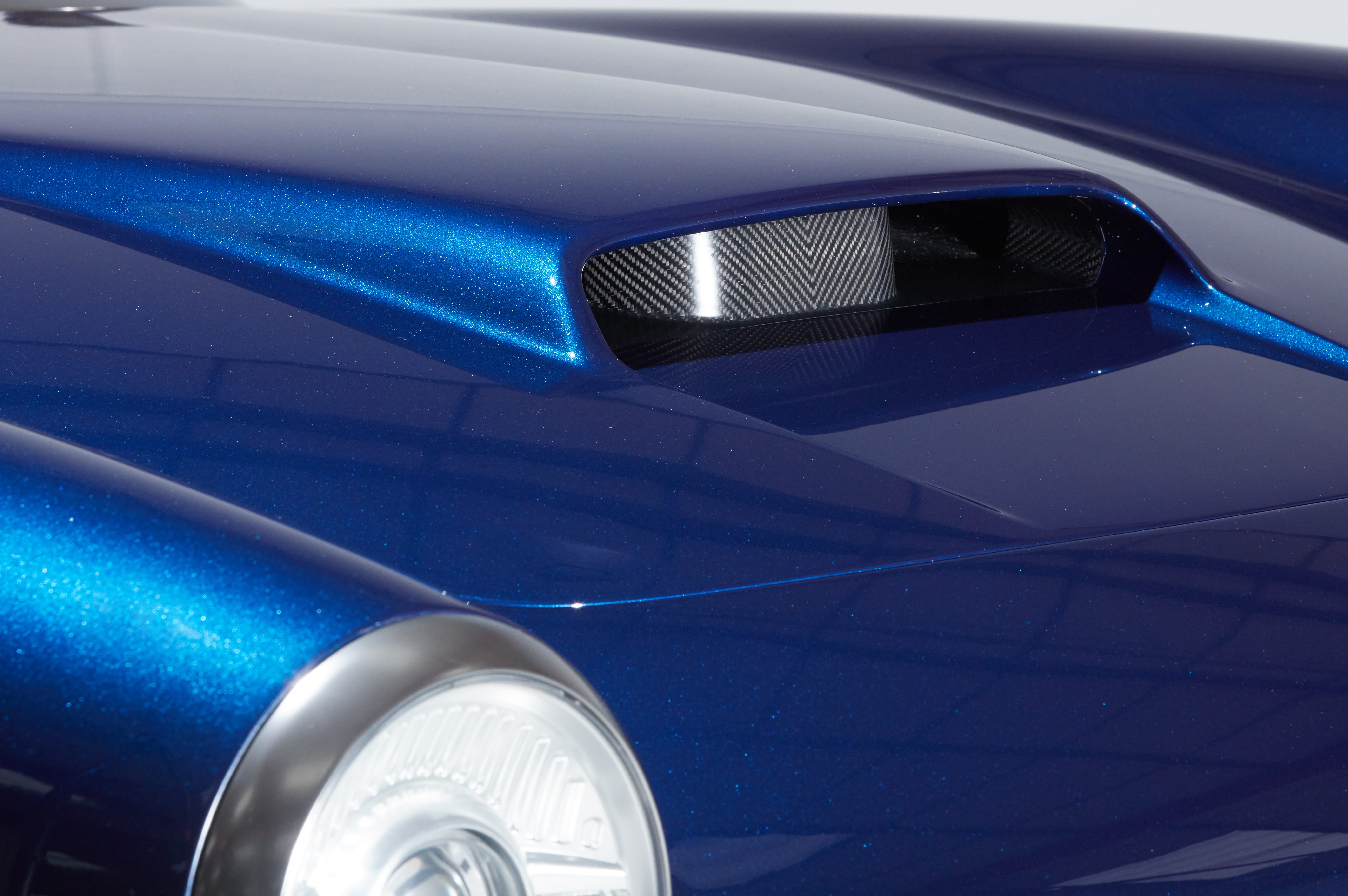
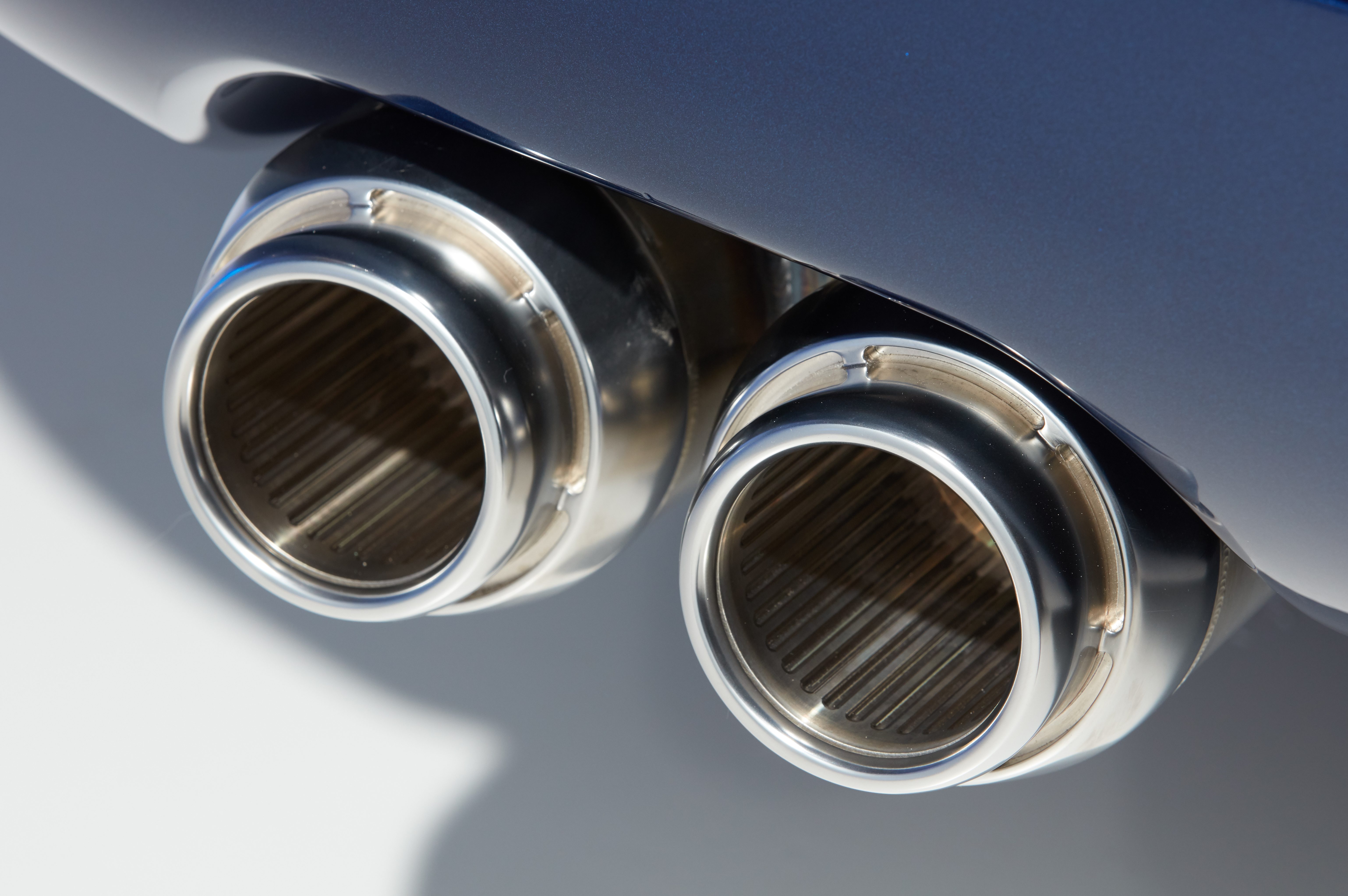
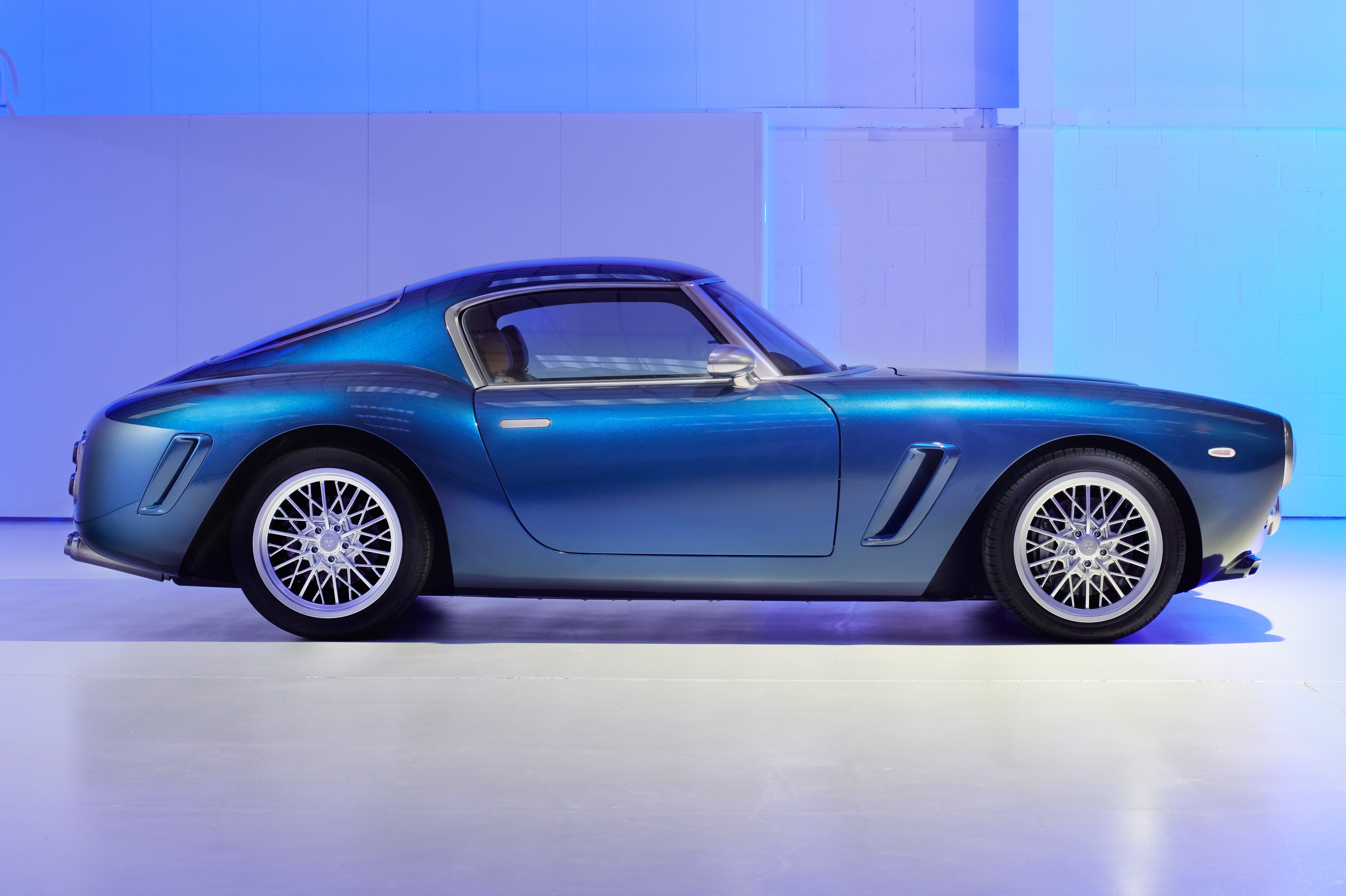
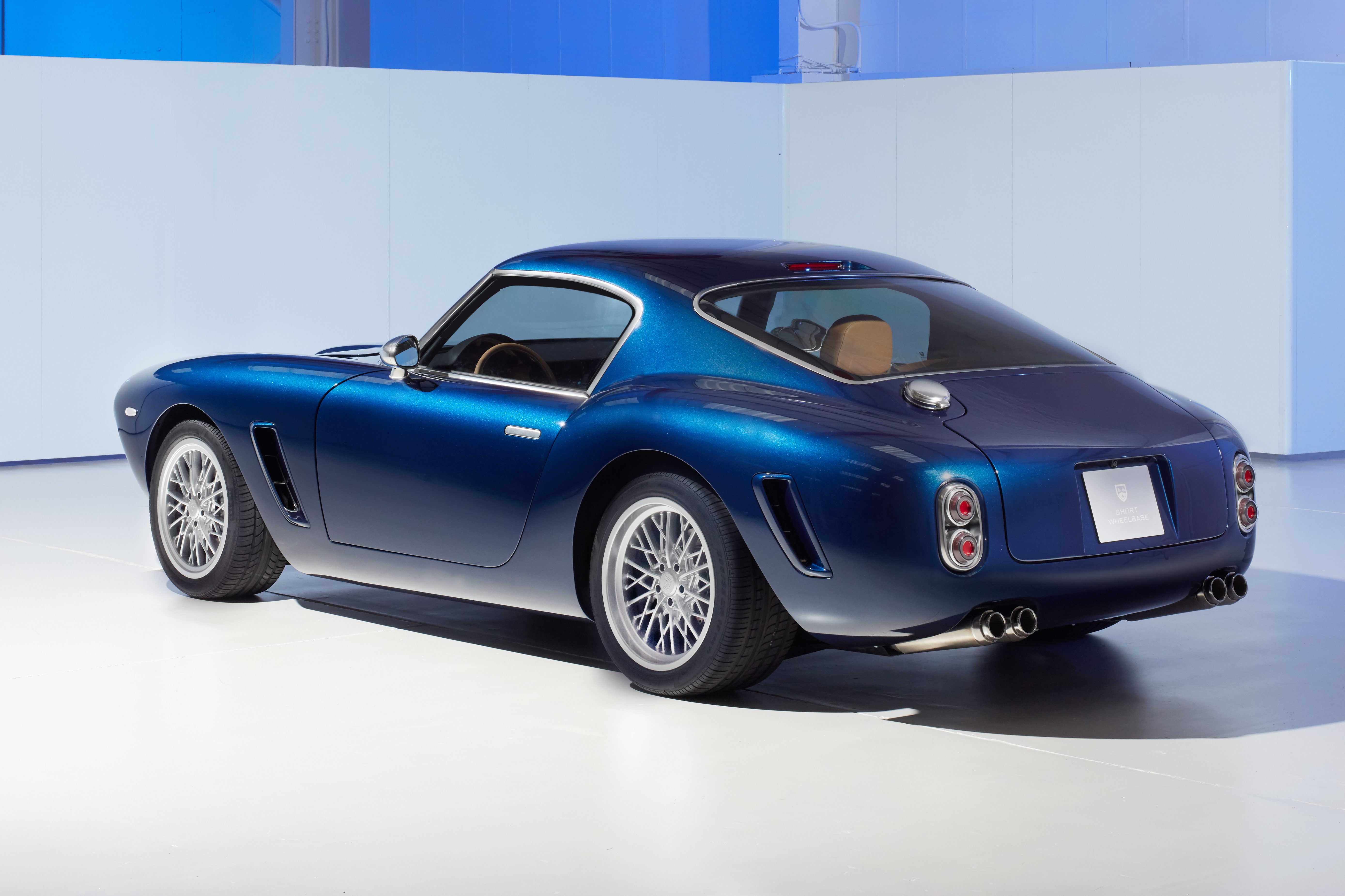
It’s a truly interesting concept that to the untrained eye would be convincingly classic, though there are some tell-tale signs that this is a modern vehicle. The smart halogen headlights, the twin-stacked rear lights, a touch of carbon fibre visible through the prominent bonnet scoop and the intricate quad exhaust pipes all confirm 21st century production techniques.
What lies beneath
And then there’s the width of the car — proportionally much more generous across its width than a machine from the 1960s, even a sports car. It hints at the structure beneath, which is much more recent… but still not entirely modern: the Ferrari 550 Maranello, one of the most lauded performance cars of the late 1990s. This is for good reason, says Mallock.
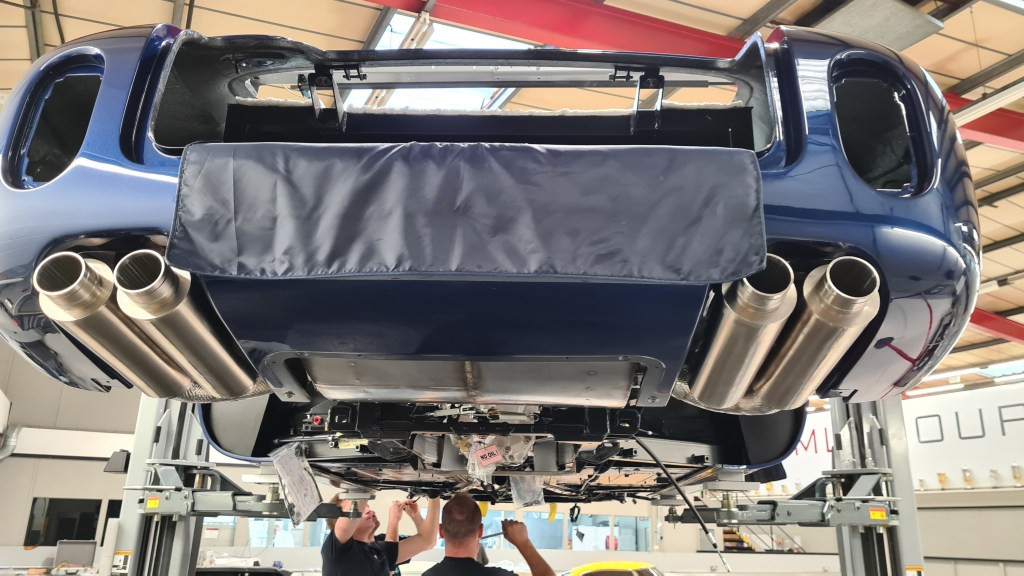
“Basically, we carry over 550 componentry, including some of the chassis, purely from a legislative perspective, predominantly for North America, which is a key market for us. To sell a new car into North America is a massive investment for crash testing and so on. So we retain just enough that if you squint, you could say it still carries over enough 550.”
The Short Wheelbase retains the heart of the donor 550Ms — the original Maranello 5.5-litre V12s, though blueprinted, rebuilt and “brought back to nominal” — and keeps the same wheelbase and suspension pick-up points. Cuts here and additions there were necessary to accommodate both the body and some of the updated componentry, including around the radiator packs.
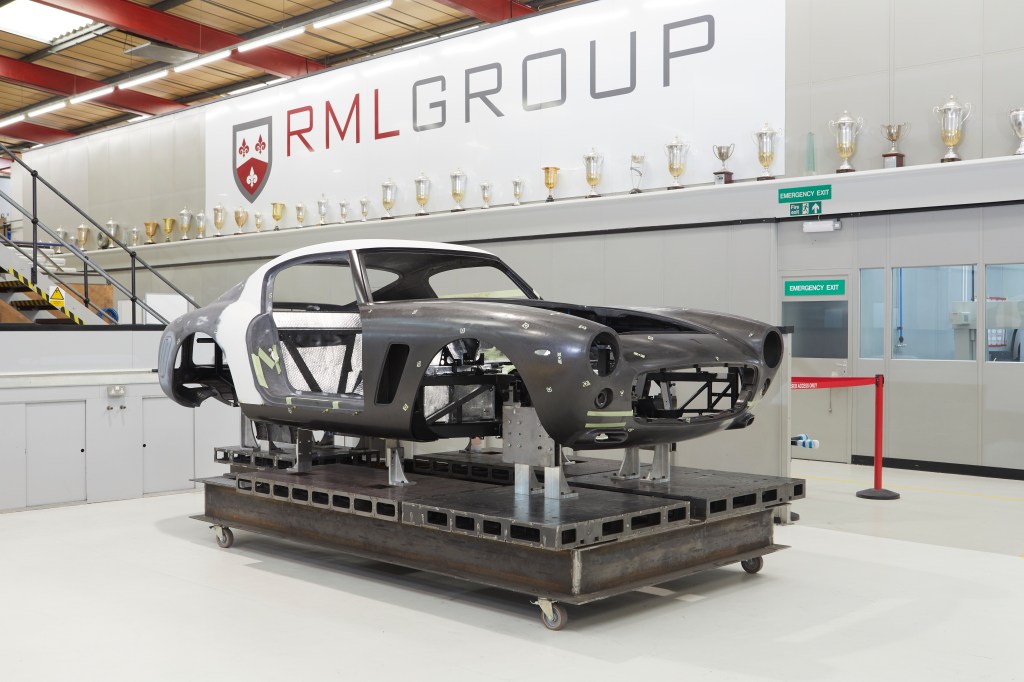
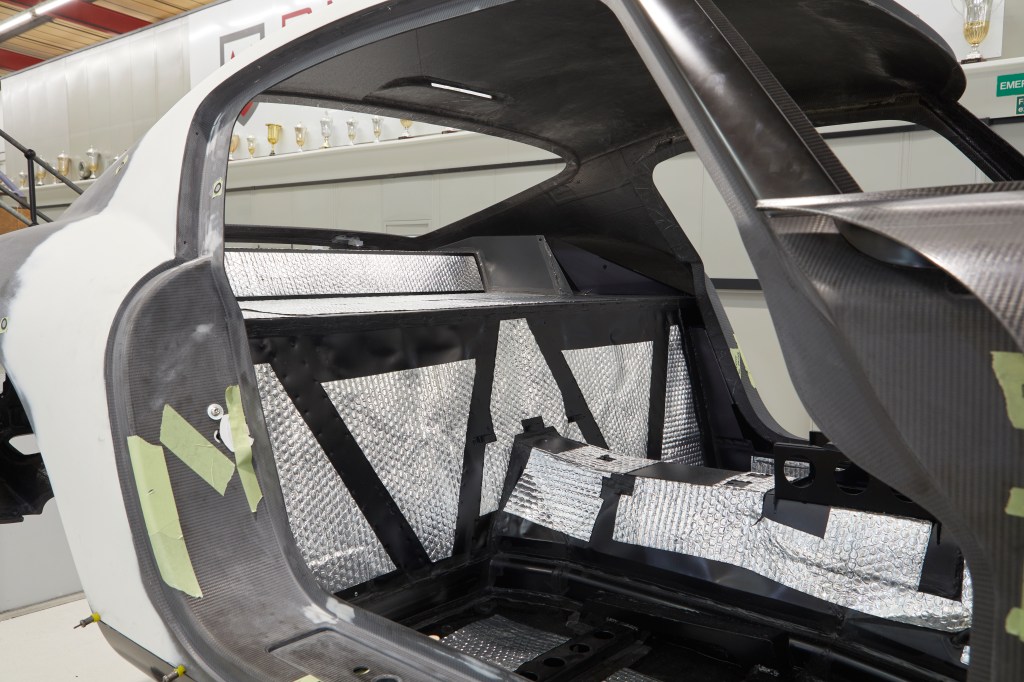
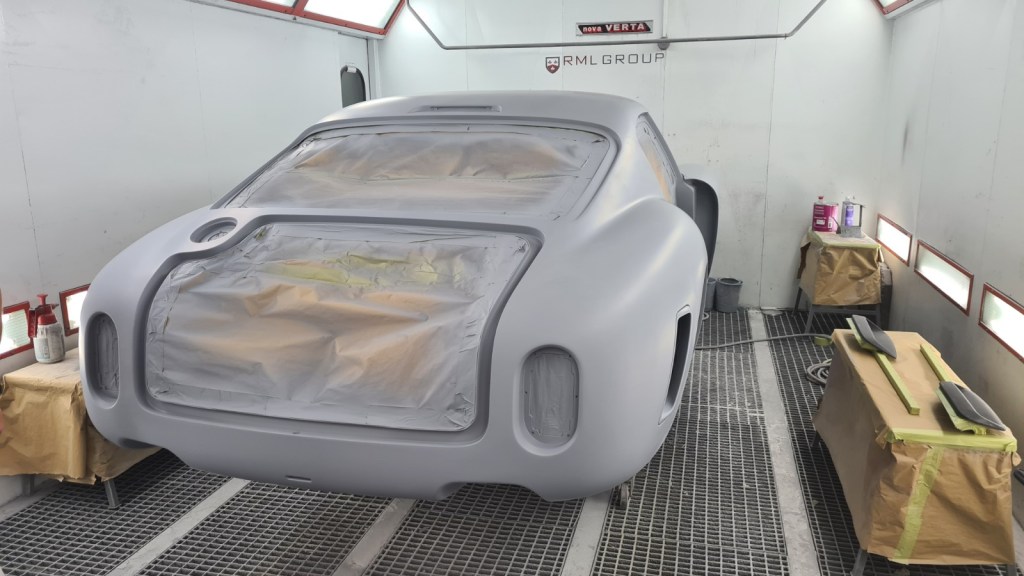
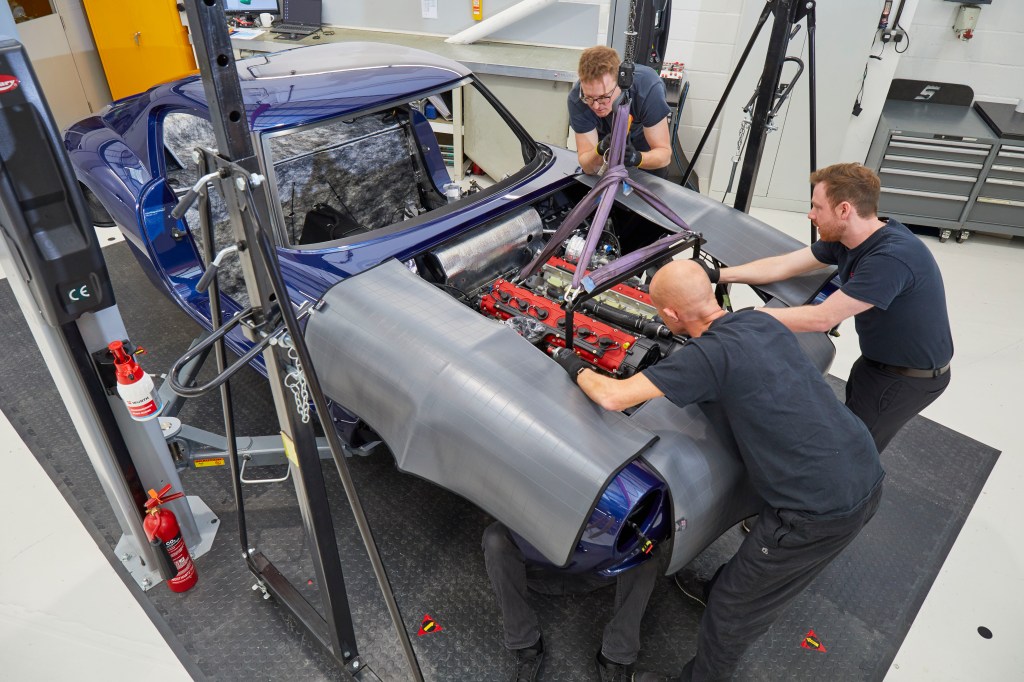
The D-pillars are chopped and replaced with carbon fibre, too, which means a few mods to the steel to allow bonding. Overall, the structure is stiffer than the original, RML claims.
All new are the 18in wheels — designed and built in-house to accommodate Pirelli P-Zero Rosso tyres, which means they’re future-proofed and maintenance is simple for owners.
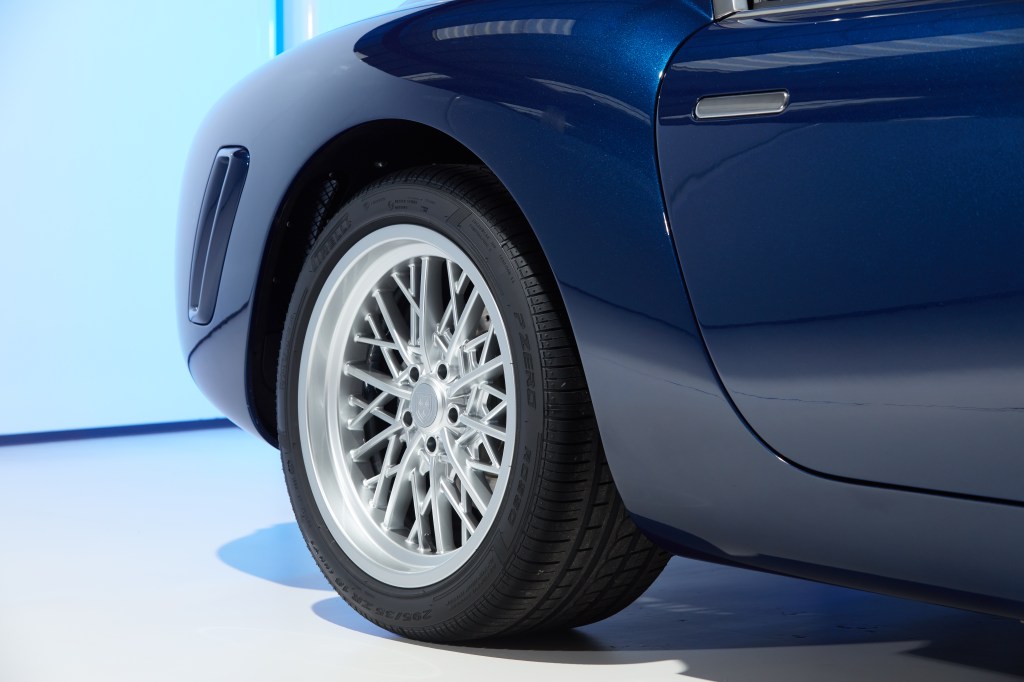
Also new is the suspension, lowered with custom springs and Ohlins dampers tuned to RML’s specifications. Testing involved comparisons with a standard 550M and a 550M with the Fiorano handling pack, though according to Rutherford, “The Short Wheelbase is neither. It’s a little bit different to give it the right feel.”
Presumably he means vehicle dynamics that match the retro styling… and it’s time to find out.
On the road
One good thing about using a 1990s GT car as the underpinnings, rather than an original car from the 1960s, is that I can fit inside. The RML Short Wheelbase accommodates drivers up to 6ft 6in, according to the press info, which is music to the ears of this 6ft 5in hack.
I reach for the doorhandle to find out if the claim is true, with a warning from Mallock that the doors of “Car Zero” — the prototype that I’ll be driving — aren’t quite up to customer car specification.
“We’ve redesigned the door with new glass, geometry and door seals,” confirms Rutherford. “It’s part of a rolling upgrade and this car doesn’t have the new door yet, so you will probably notice you get quite a bit of wind noise out on the road.”
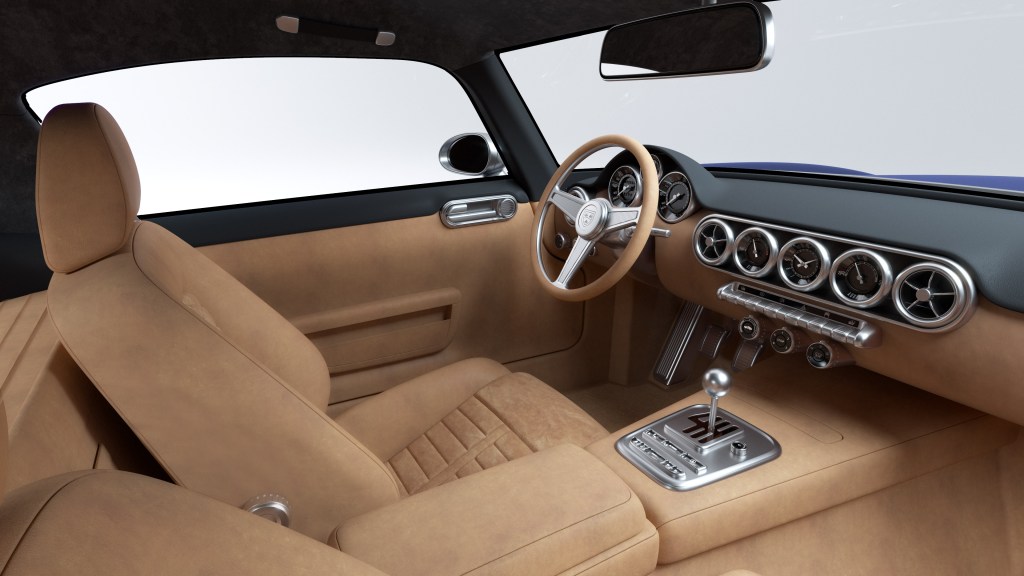
Inside I find that my oversized frame does indeed fit, with headroom to spare, and quickly find the steering wheel adjusts for reach and rake. The seat itself — based on a Recaro frame but with bespoke trim — slides forwards and back, but not up and down, so all drivers’ backsides sit equally close to the asphalt.
They’re also positioned quite far inboard, to help with headroom, which affects entry and egress slightly but means a driving position as close to centre as possible, and being nestled cosily near to the 6-speed manual gearshift.
The interior itself is smart and modern, purposefully devoid of plastic (leather, fabric or Alcantara are the trim choices, in black, tan, grey, red or blue) though with attractive analogue dials rather than digital displays.
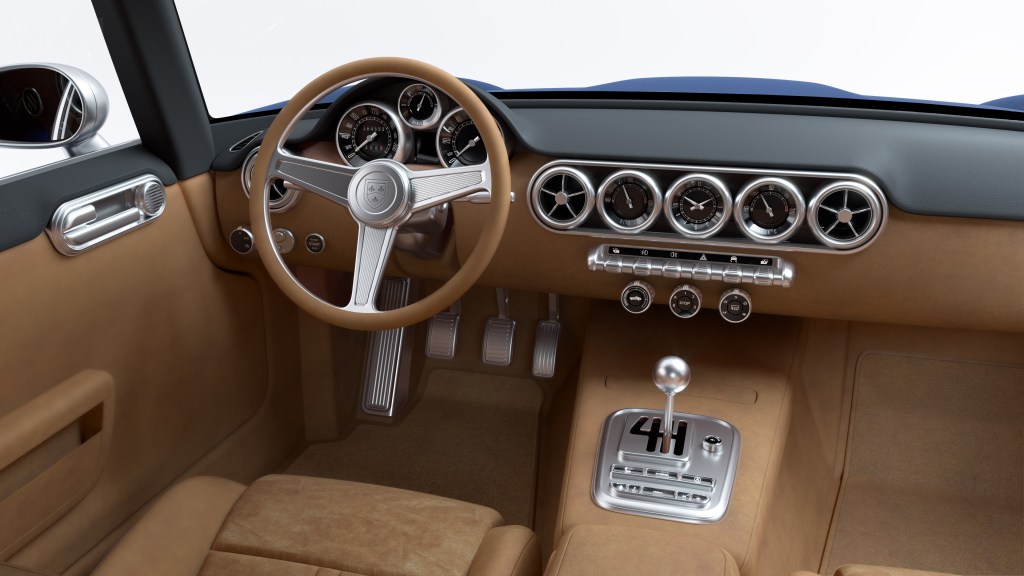
Every switch, dial and button was machined in-house, and I’m shown the evolution of the central piano keys for comparison with the early version installed in the prototype — there’s a definite but mild improvement in feel over what I felt were acceptable ones in Car Zero.
There is a touchscreen for infotainment, which features built-in sat nav but can also run Apple Carplay and Android Auto. However its location, rising from the transmission tunnel, down low under the dash, is far from ideal and the standard menus are less than intuitive.
This isn’t a car in which you’ll want to spend time prodding touchscreens, though — it’s one in which you’ll want to devote all your attention to driving, and driving well.
Having fired up the sonorous V12, the first unexpected feature is a clutch pedal that doesn’t require the legs of an olympic cyclist to operate. It’s not light, but not heavy, either, and after slipping the open-gated lever into first, finding the biting point is simple.
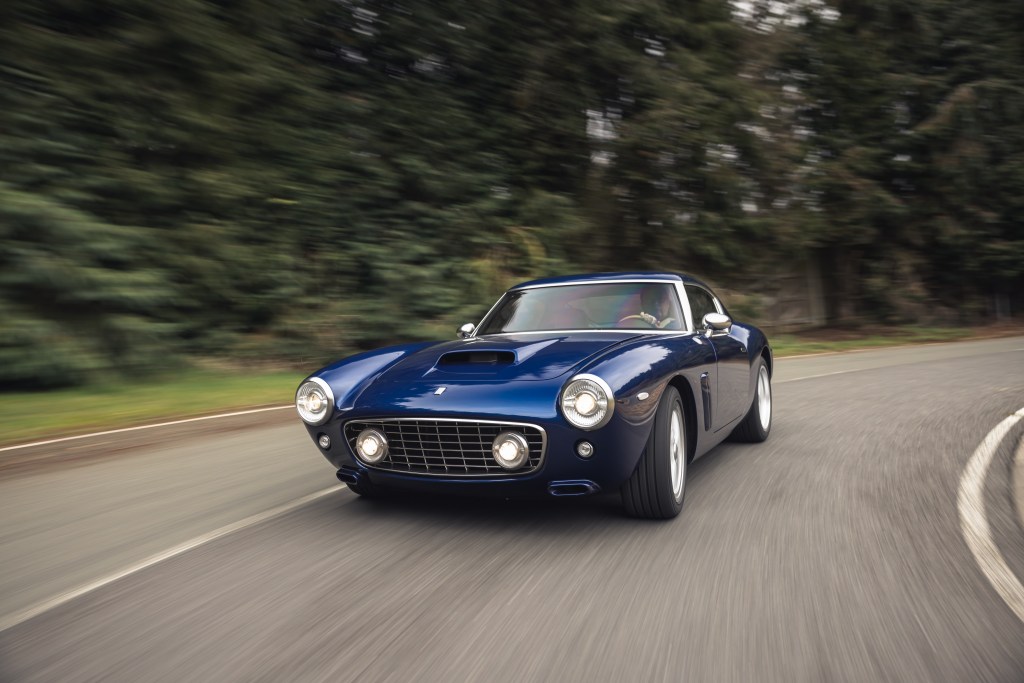
Heading out onto the road, the steering is reassuringly weighty despite servotronic assistance, and combined with the simple three-spoke wheel there’s very much an old-school feel to the handling.
Gathering pace, the steering becomes sharper and the front end dartier. Once the engine and brakes have warmed up a little I dial in a few more revs, snicking through the gears, and begin to really enjoy the experience. A limited slip diff along with the lowered ride height (and therefore centre of gravity) result in delightful poise and balance through the corners.
I caution myself not to fully open her up for fear of sending this priceless prototype backwards through a stone wall. Rain and the presence of the PR man in the passenger seat during my test drive increased my levels of caution, though a minimal amount of slip is induced at the rear to check the car behaves itself, and it does.
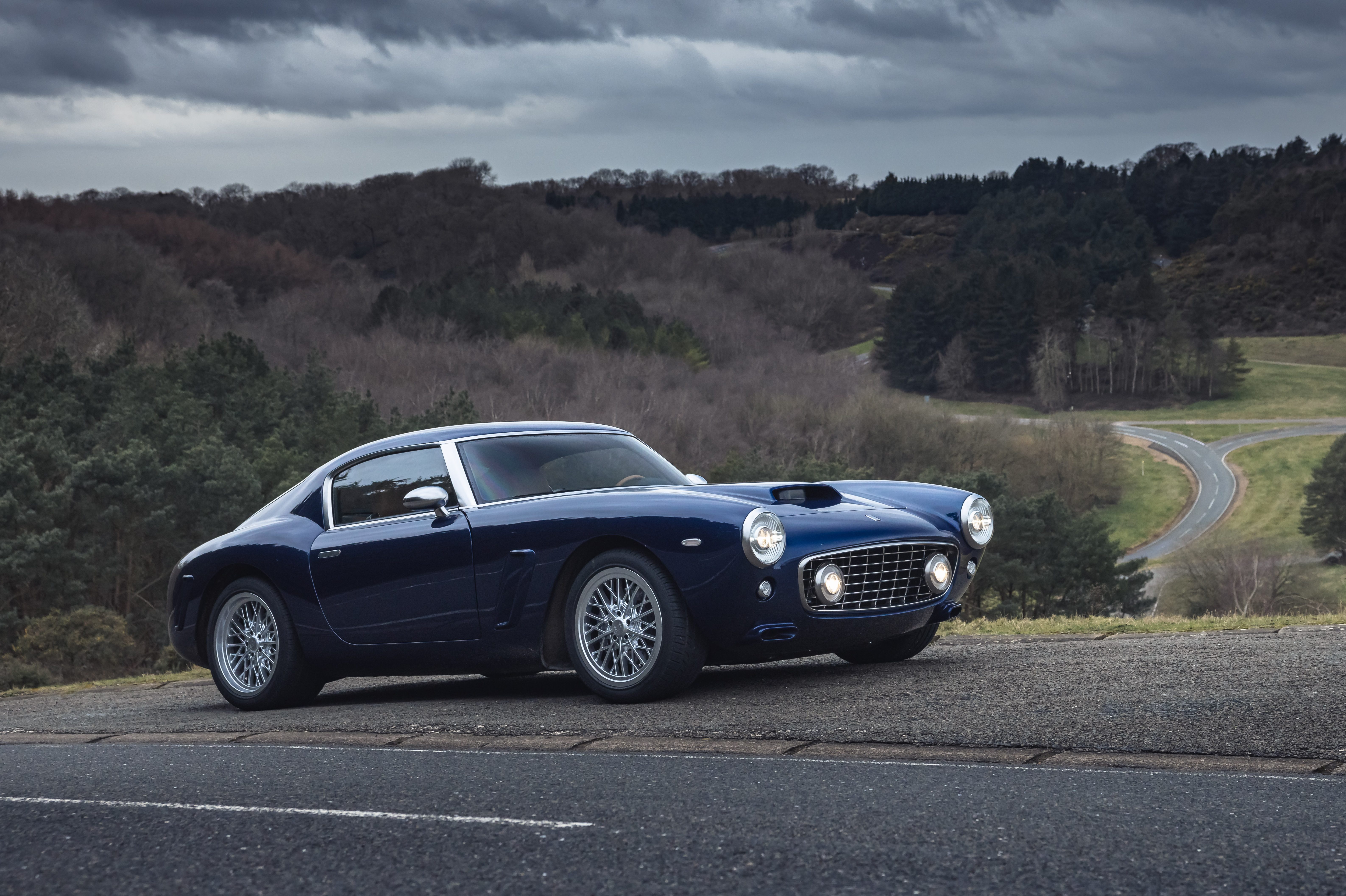
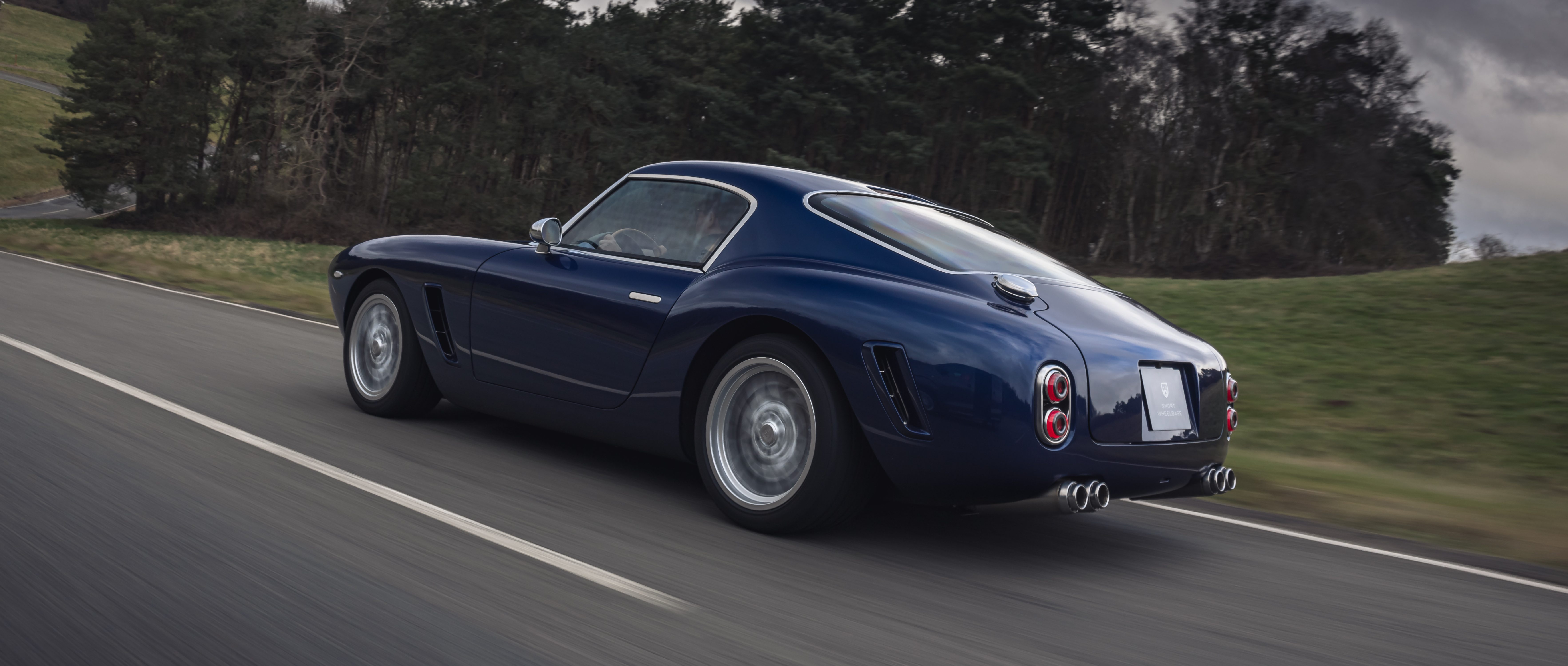
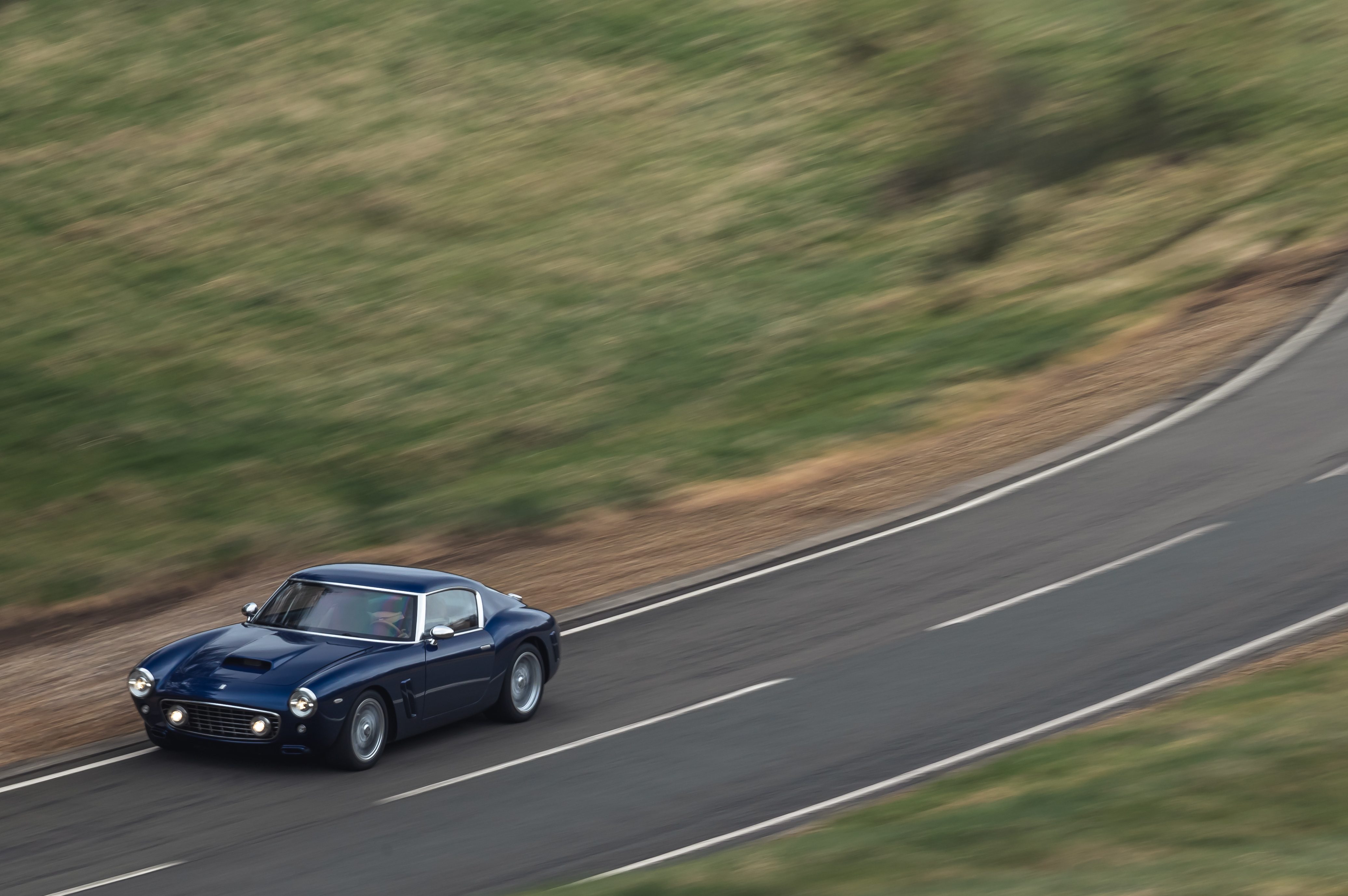
I get the sense that this is a car you’ll enjoy learning to drive over months rather than an afternoon, eking out more and more of its potential. But it’s not perfect — the bespoke suspension proved overly soft at times, with the car bottoming out at one point over a particularly undulating section of 60mph country road, and speed cushions proving the Short Wheelbase’s nemesis — crawling over at a 45-degree angle is the only way to prevent the undertray taking a beating, which can prove embarrassing through a town centre. A slightly higher ride and firmer compression settings would improve the experience no end.
On the plus side, modern creature comforts proved extremely welcome. The wind noise I was warned about was there but far from unpleasant, which is good news for the final customer versions, the wipers are an improvement on most ‘60s efforts and air conditioning means there’s no misting up inside. It’s unlikely customers will want to take their cars out during a downpour, mind you.
A sustainable business model?
After an hour at the wheel I find myself back at base, and reflect on the Short Wheelbase project as a whole. How sustainable is it, when there are only a handful of potential donor vehicles in existence, and very few 550M owners will be willing to hand over their cars unless they’ve already come to a sticky end (a development model had been crushed by a fallen tree, and became an insurance write-off)?
“Will you be hunting down examples and cutting their brake cables?” I joke. “We have three customer cars in the works and there were 3,000 550s built, so there are plenty out there,” says Rutherford.
But does RML actually need to build many Short Wheelbases? At £1.35m before local taxes, including sourcing of an appropriate donor car and rebuilding all of its retained components, the potential to recoup the investment is most definitely there, even if only a few more 550s are handed over.
Making money, though, is surely not the point. The Short Wheelbase is most definitely not RML’s core business; it’s a way of opening the doors to its factory and shining a light on the firm’s rich history and enviable engineering prowess. And on that front, it’s mission accomplished.

Related articles
- After reading this review of the RML Short Wheelbase you might be interested in our review of the Healey by Caton
- Alfa GT restomod packs 493bhp twin-turbo V6 from Giulia Quadrifoglio
- Ferris Bueller Ferrari sells at auction for six figures — but it should be worth a lot more
Latest articles
- Skoda creates digital showroom on Amazon in European first
- Porsche 911 Carrera S 2025 review: Harder, better and faster – but is it the best 911?
- F1 2025 calendar and race reports: The new Formula One season as it happens
- Seven great automotive events to visit this summer, from F1 to art and champagne
- Watch new Porsche 911 GT3 smash Nürburgring record for manual cars
- Skoda Elroq 2025 review: Czech carmaker can’t seem to miss with its electric family cars
- Five best electric cars to buy in 2025
- Should I buy a diesel car in 2025?
- Zeekr 7X AWD 2025 review: A fast, spacious and high tech premium SUV — but someone call the chassis chief


